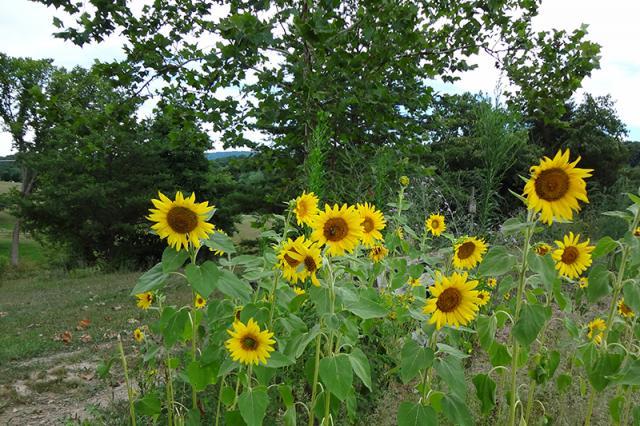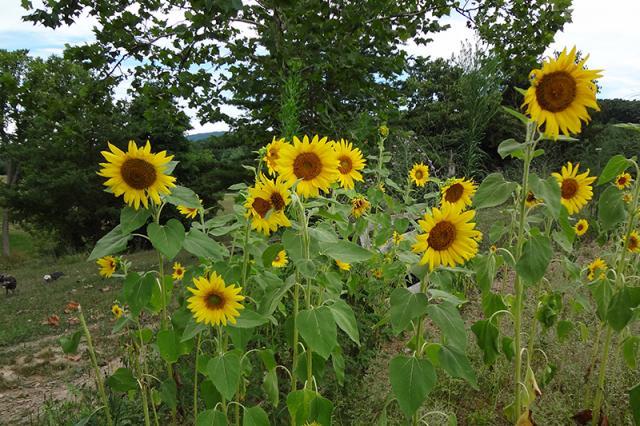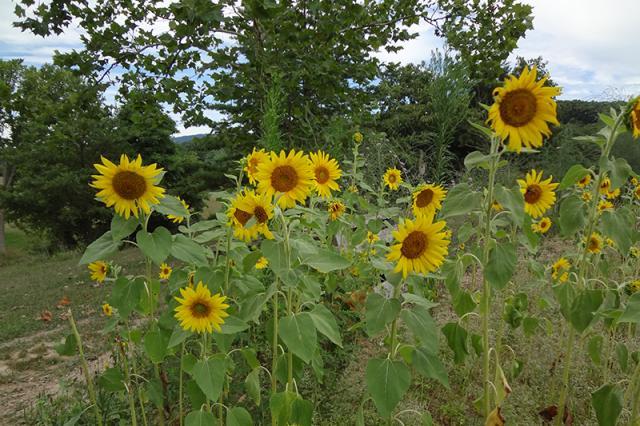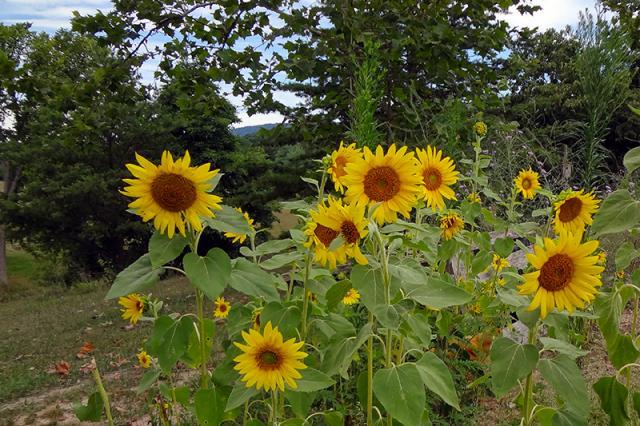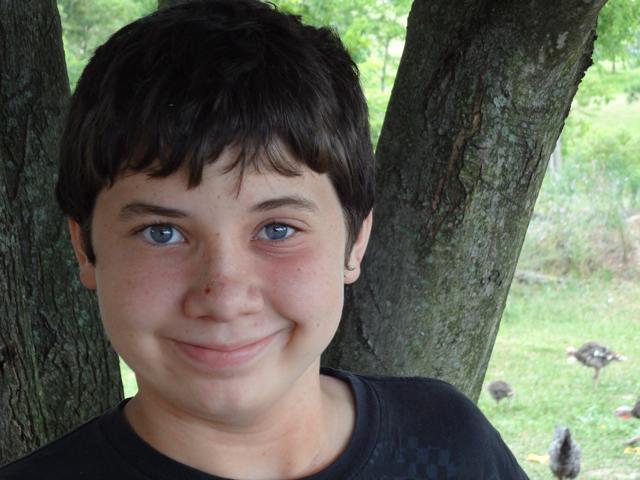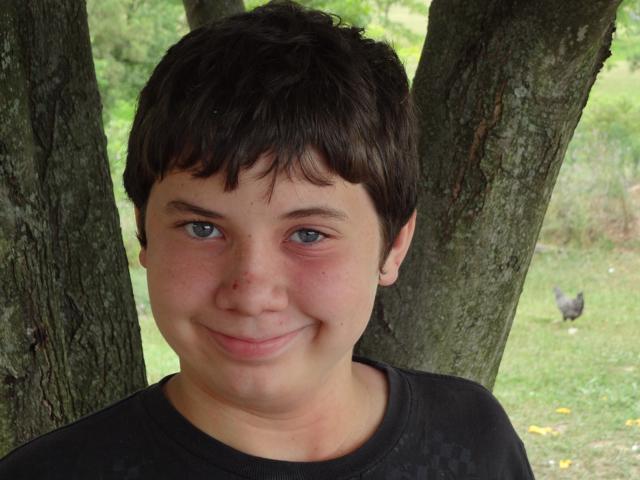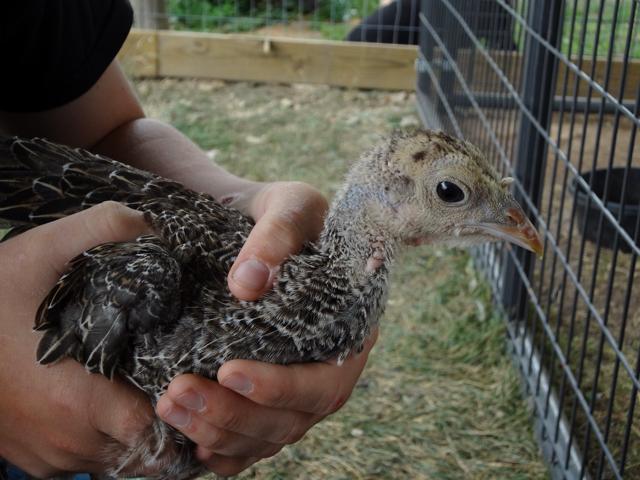Erin wanted a lesson on exposure which is a very good place to begin learning the very basics.
I left the big gear inside and took out a point and shoot so I would be on the same page as you all. Erins next lesson will be on exposure, so break out your manuals, read how to adjust your exposure, especially exposure compensation"
Just a quick grab, zero editing in these two shots.
Image 1 is a full auto image out of the camera allowing the camera to adjust every aspect of the image
Image 2 is still in auto mode, however 1/3 stop of light has been removed by using exposure compensation. Look at the detail come back in the left side of the sky. (slight crop variation due to turkeys pushing me around)
Image 3 was taken using one of the cameras "scene" modes. Its actually fairly intelligent and handled the sky detail well without killing the mid and shadow tones, however you can see that the green in the sunflowers is slightly brighter then the image using exposure compensation.
Last image is the same as #3 with basic edits done in a post work flow.
Finally, an edited image using -3/4 stop of light. Much better detail, and color, as well as being hosted off of a forum based site.
Sorry for the haste but im packing for this weekends assignment. Maybe if we can get some basic questions answered, you can really buckle down and start creating images that will have you much happier when you display them.
 :
:



